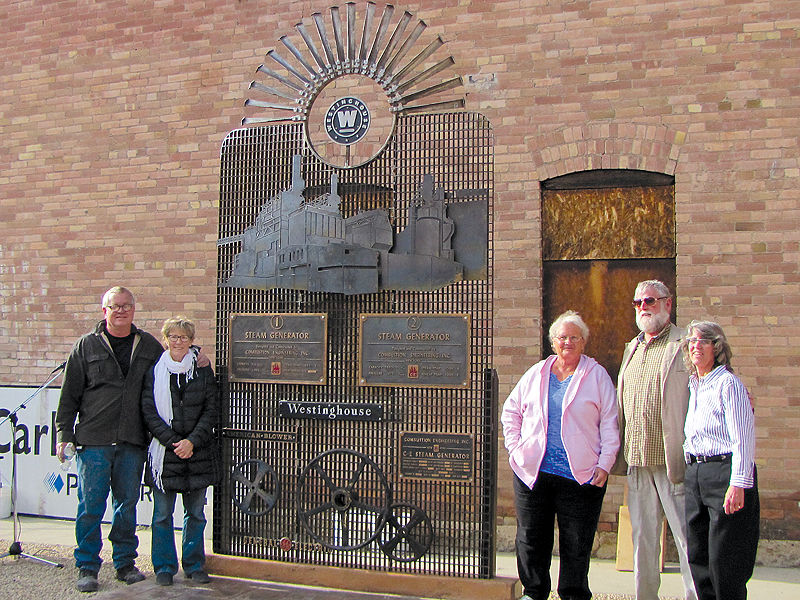While it was not nearly as big as the Intermountain Power Project [see IPP to close coal-fired power plants in 2025], the PacifiCorp Carbon Power Plant was a Carbon County landmark for six decades. It’s just level ground now. However, the history of the plant and the people who made it work live on as an outdoor monument and an indoor exhibit in Helper’s Mining and Railroad Museum.
The museum unveiled the tall sculpture in the courtyard and opened the doors of the exhibit Friday evening in a short ceremony.
Rep. Christine Watkins spoke of the emotional attachment she and other southeastern Utah residents had for the plant at Castle Gate. “Over the years, I grew to love this old power plant. When travelling home we knew we were ‘home’ when we saw the lights and the steam. We had to explain to each of our children as they grew older and asked what that white stuff was.
“As the workers poured their hearts and souls into the construction of this power plant, they left behind a heart in that plant that gave its all –to its consumers. But when it was torn down a soul has been left to remind us of its glory days, with powerful turbines, magnificent steel and metal girders… Thank you, Carbon Power Plant, rest in peace, but know you will always be loved and never forgotten.”
PacifiCorp spokesman David Eskelsen noted that the plant represented a pioneering achievement for Utah Power. By applying the latest transmission technology of the 1950s, Carbon Plant became the first coal-fired steam generator to be built near its fuel source instead of close to its population centers.
It was also one of the most reliable members of the company’s fleet of generating stations.
The courtyard monument is assembled from parts of the plant recovered and donated by PacifiCorp. The supporting wall is a floor grate, name plates identify each generator and its capacity, spoked valve handles anchor the bottom. Near the top is a sheet metal relief sculpture of the plant. Capping the whole thing is half of a circular turbine blade assembly reminiscent of a sunburst.
Artist David Dornan – who is also a city council member – explained after the ceremony that the people involved wanted more than a simple collection of artifacts.
The museum has dedicated an entire second-story room to historic photos and schematic diagrams of the plant and its people. Artist Jason Huntzinger designed it.
Visitors passing the photos, paused to look for an image of a friend or family member who once worked there.
The exhibit was initially spearheaded by former councilman and retired plant employee Kirk Mascaro. Funding came from donations, including Rocky Mountain power, and people who purchased boiler bricks. The bricks have donor names engraved and will eventually be laid in the courtyard.
They are still for sale.
Museum showcases Carbon Plant

Standing beside the courtyard monument after the unveiling are some of the people who made the project possible. Left to right, David Dornan, Marilou Kundmueller, Brenda Deeter, Thomas Williams and Lenise Peterman. John
